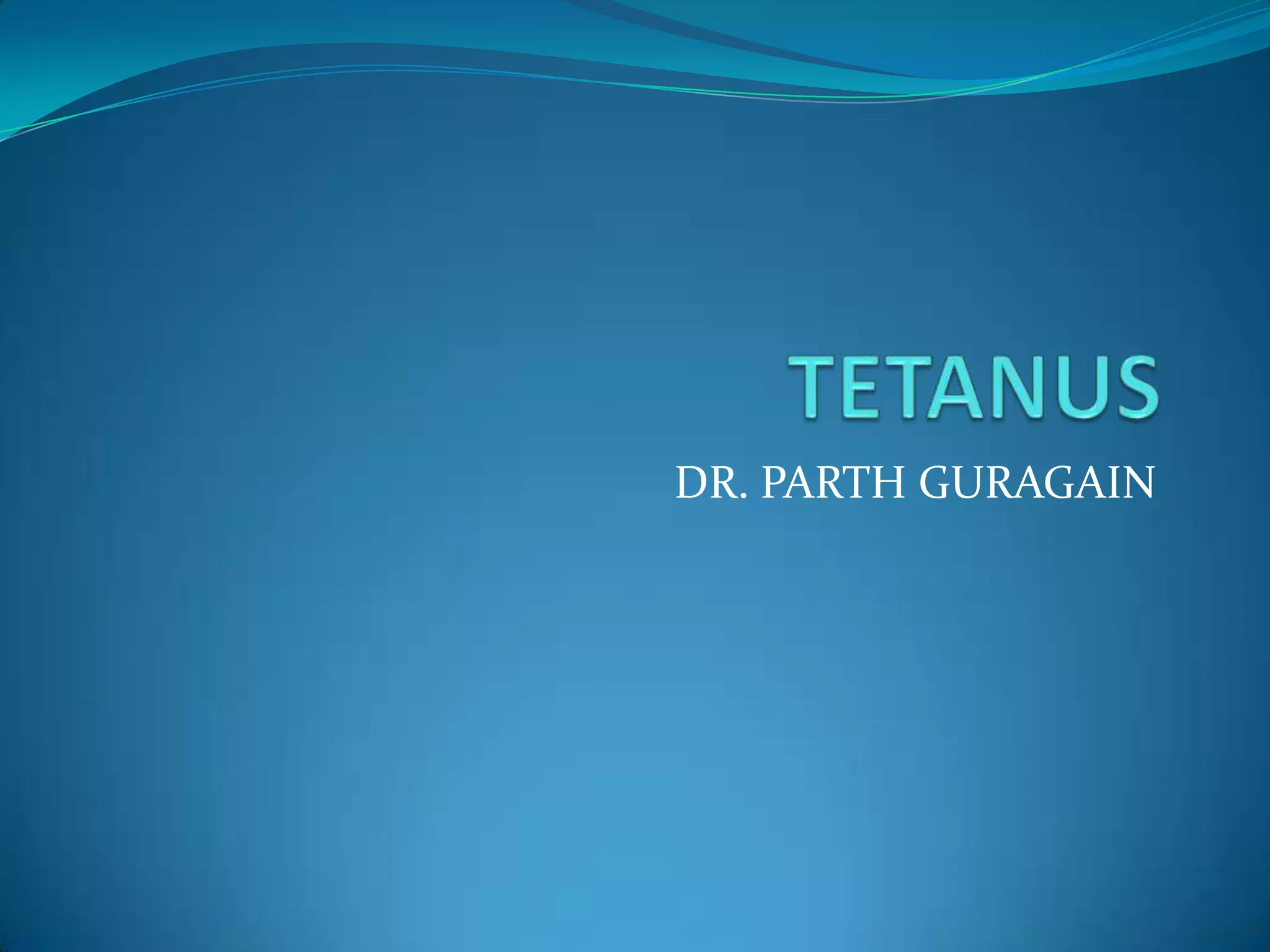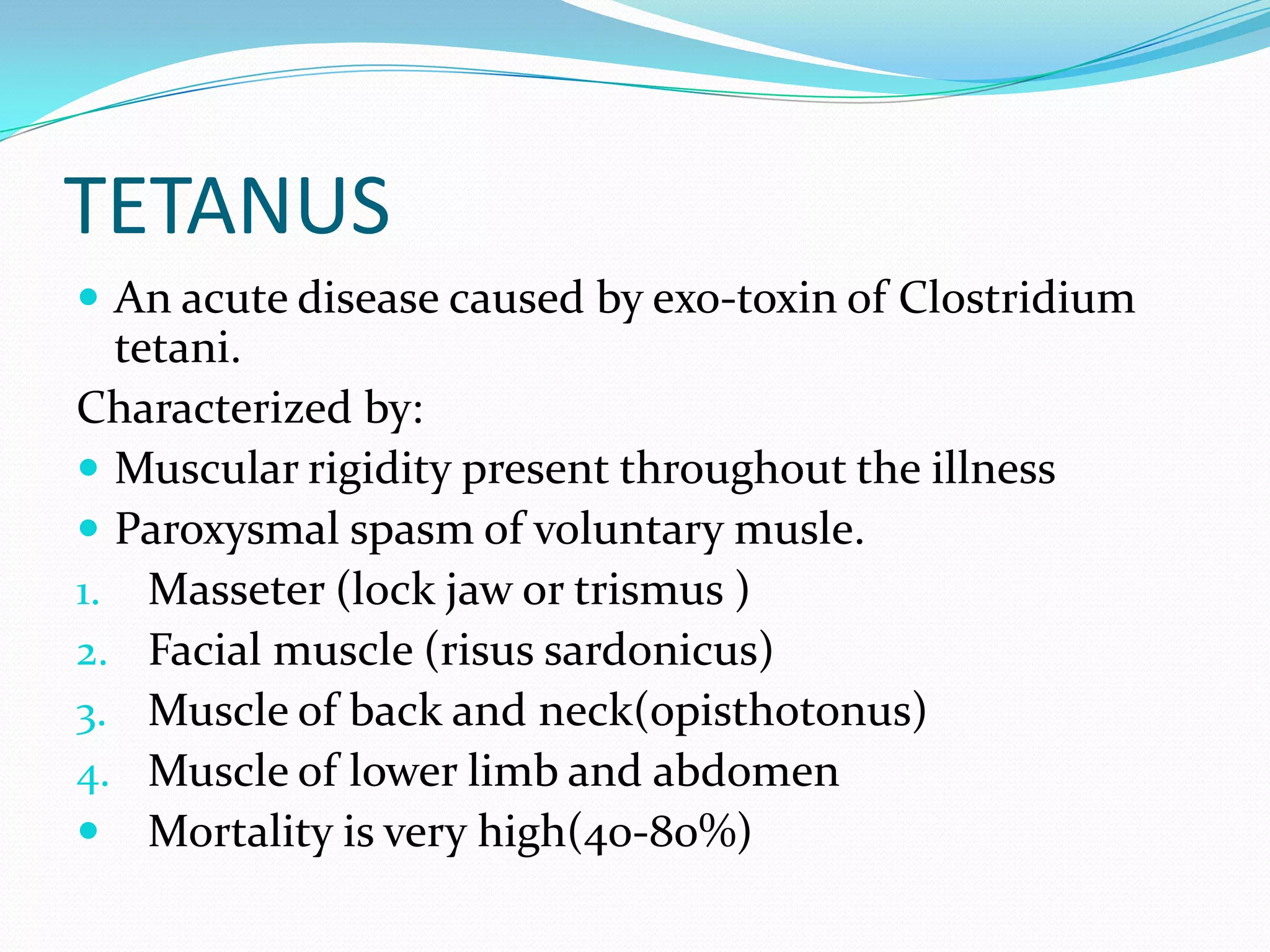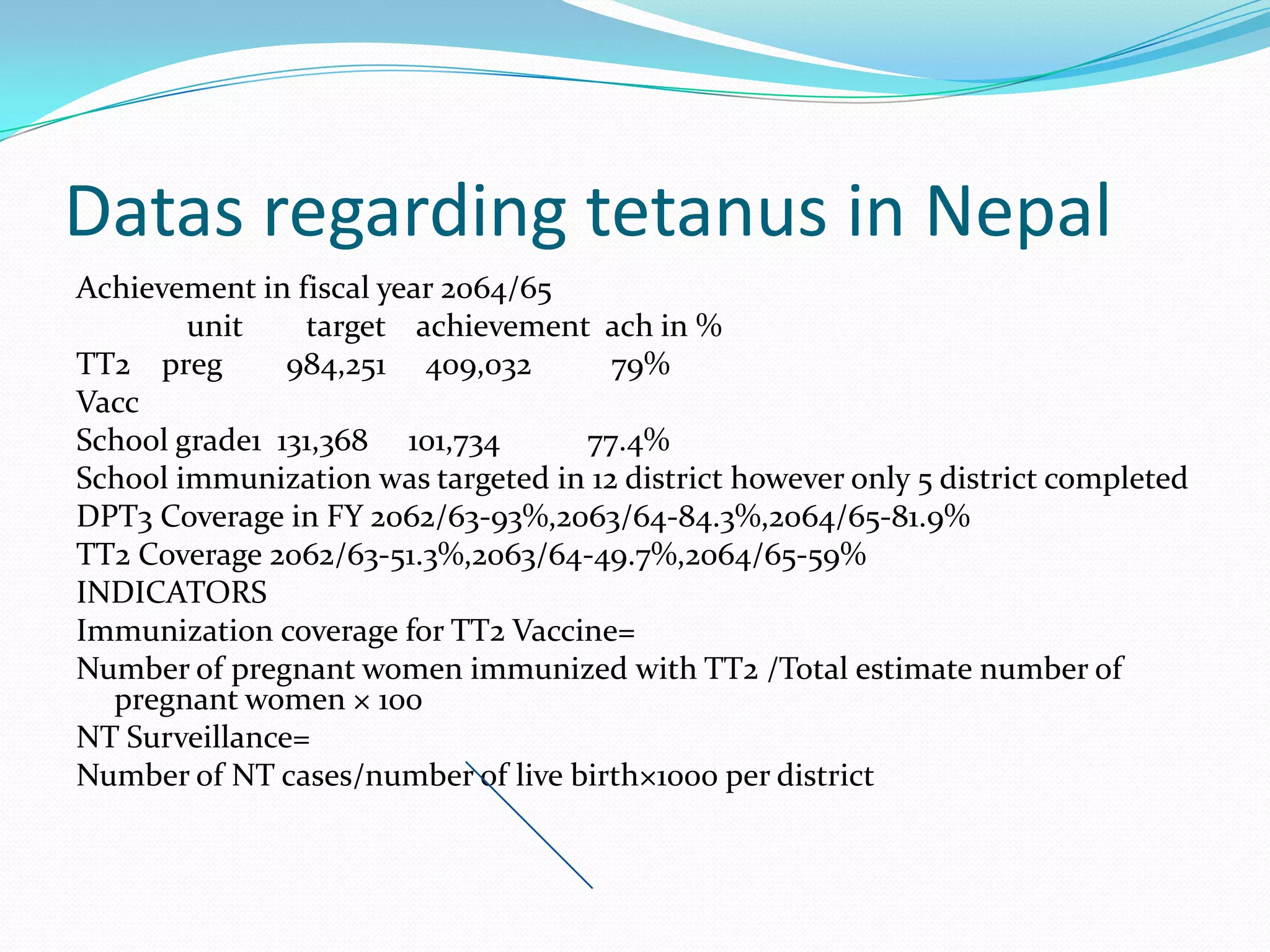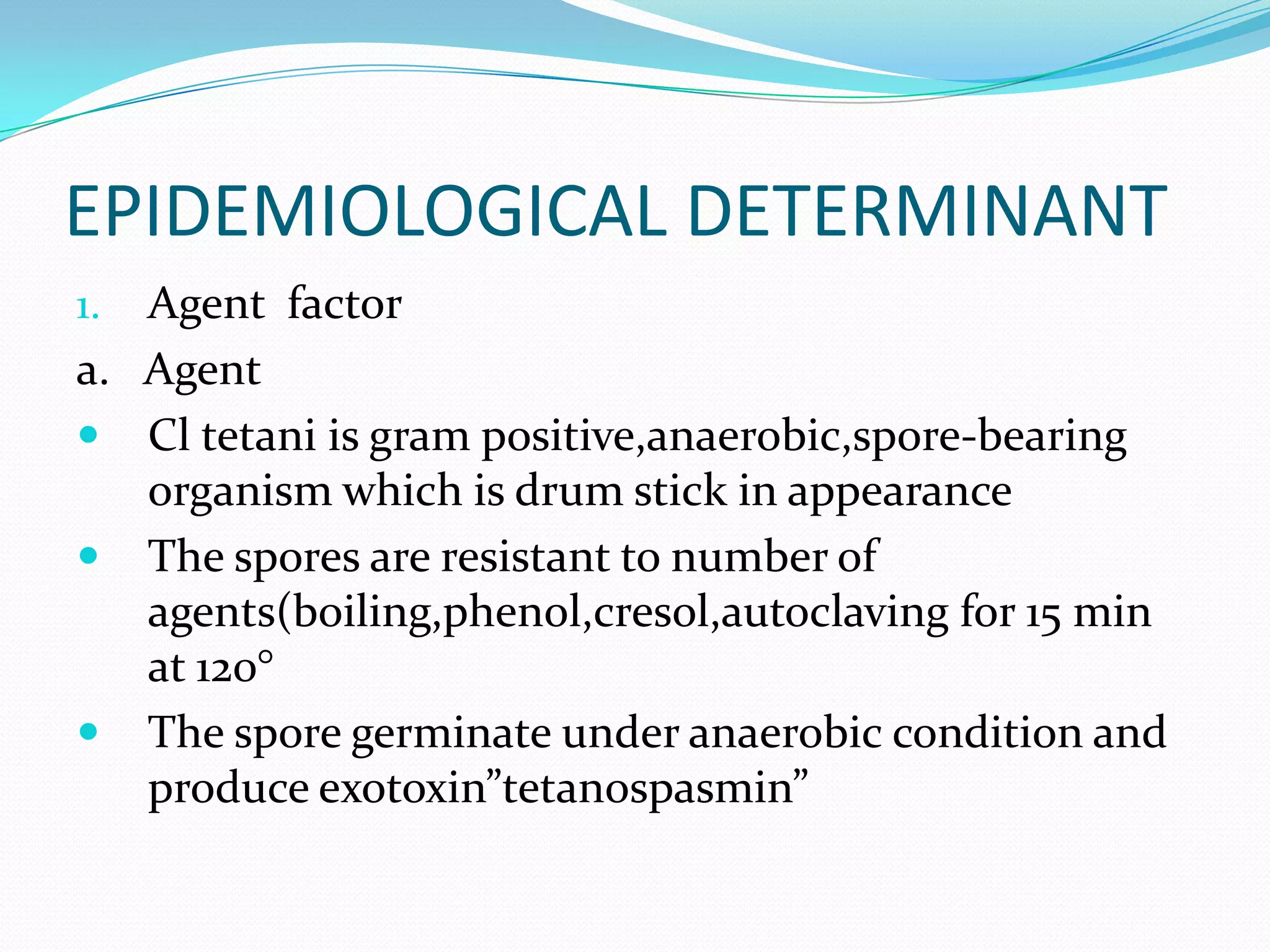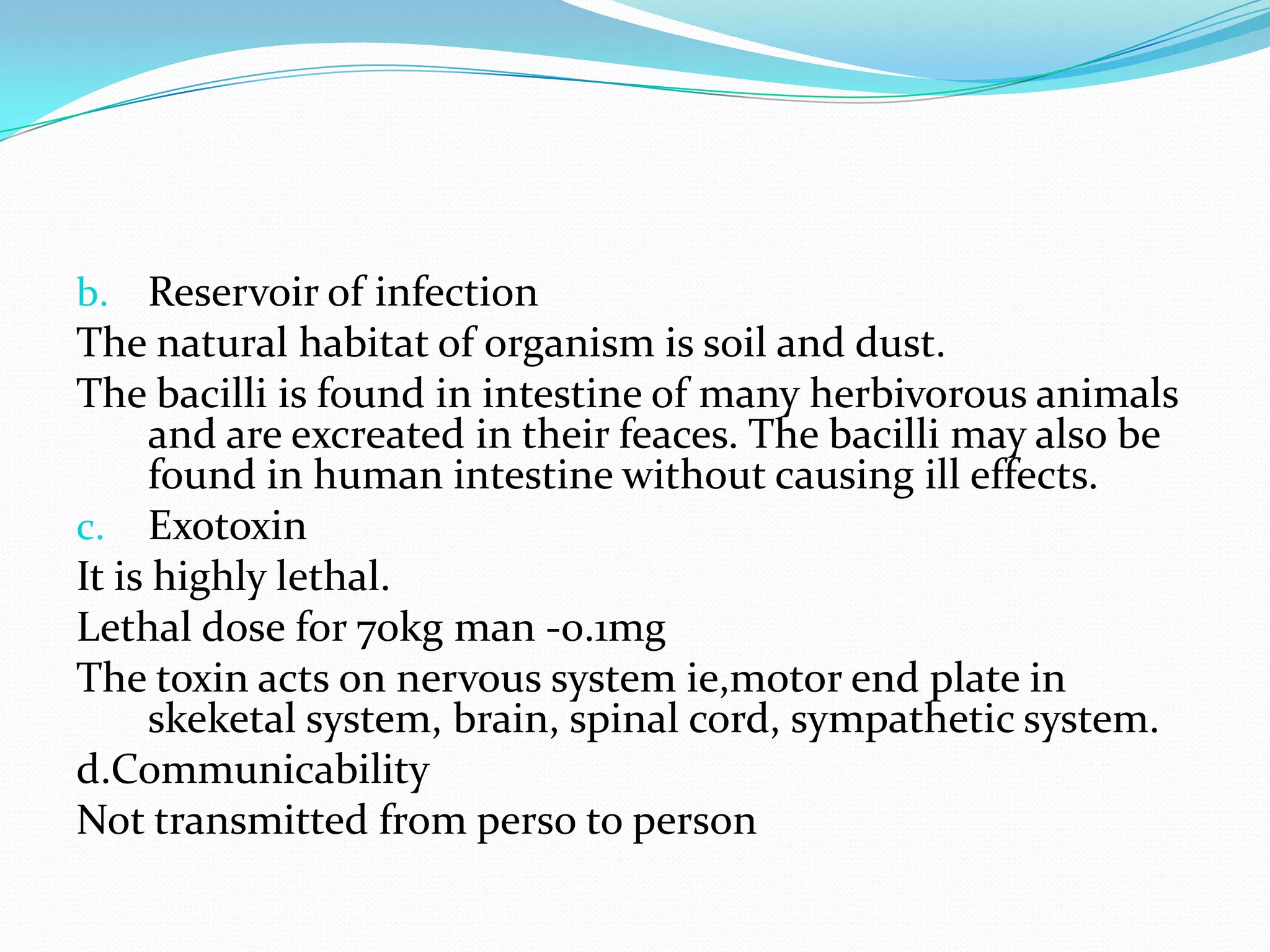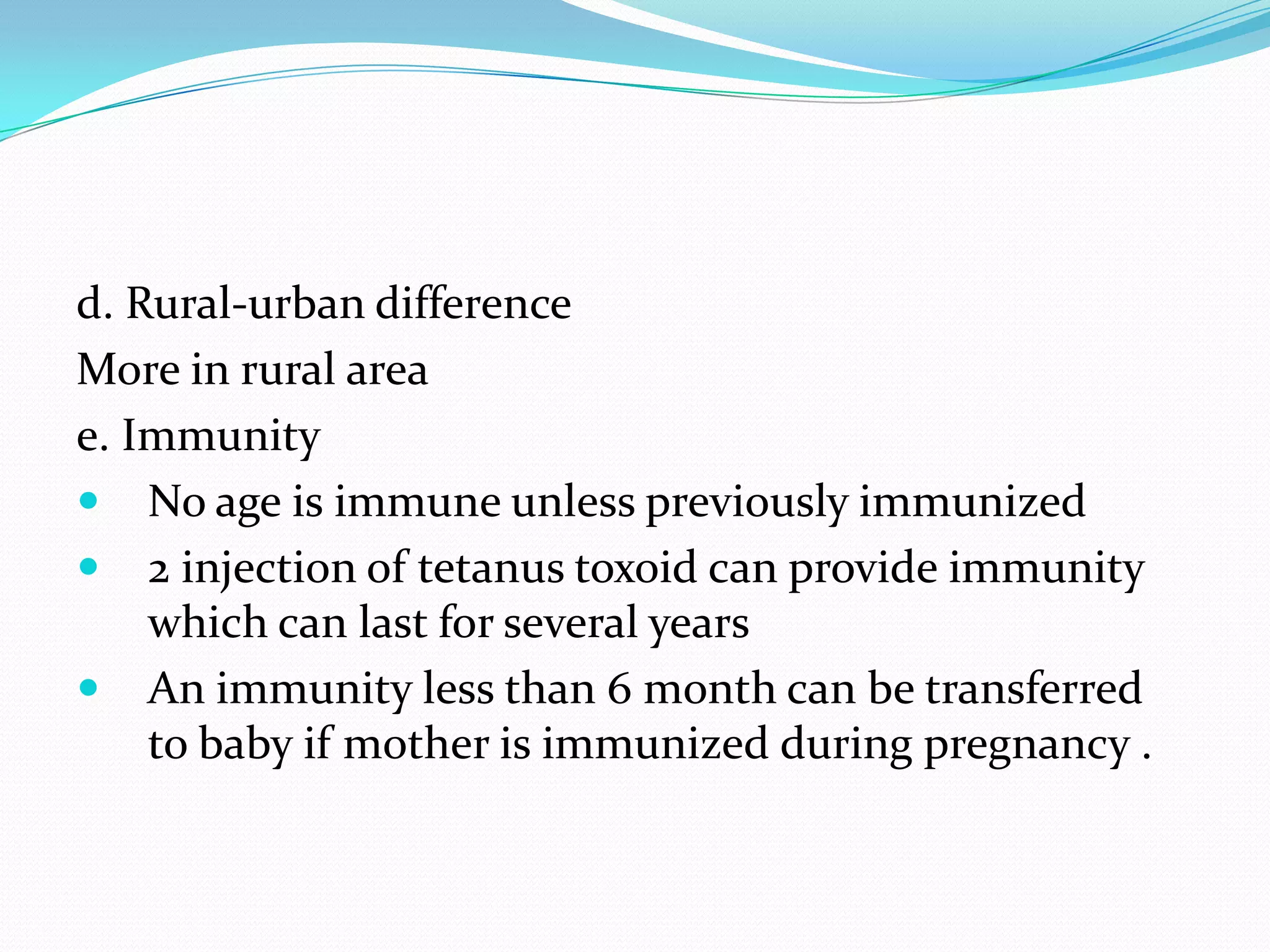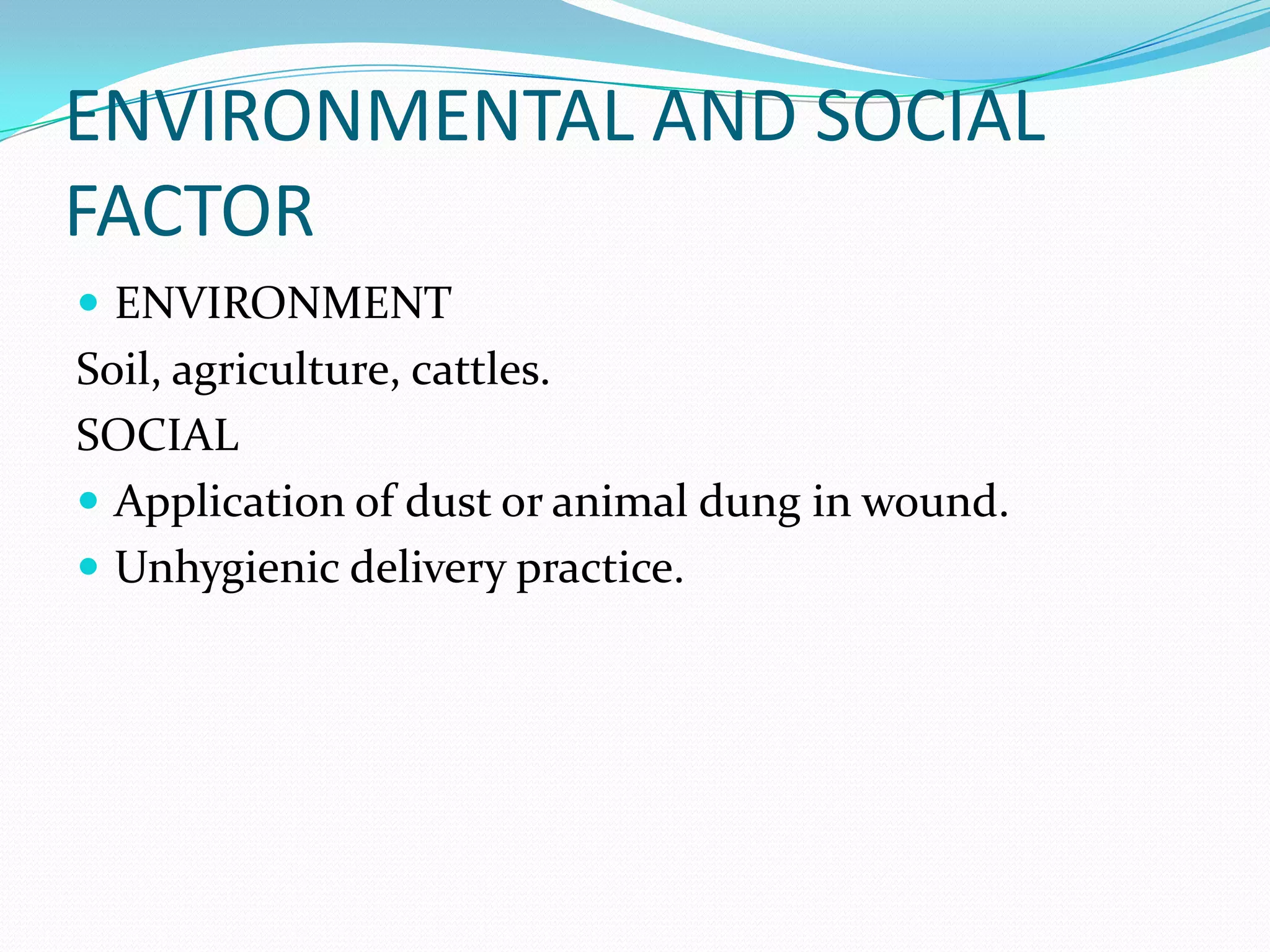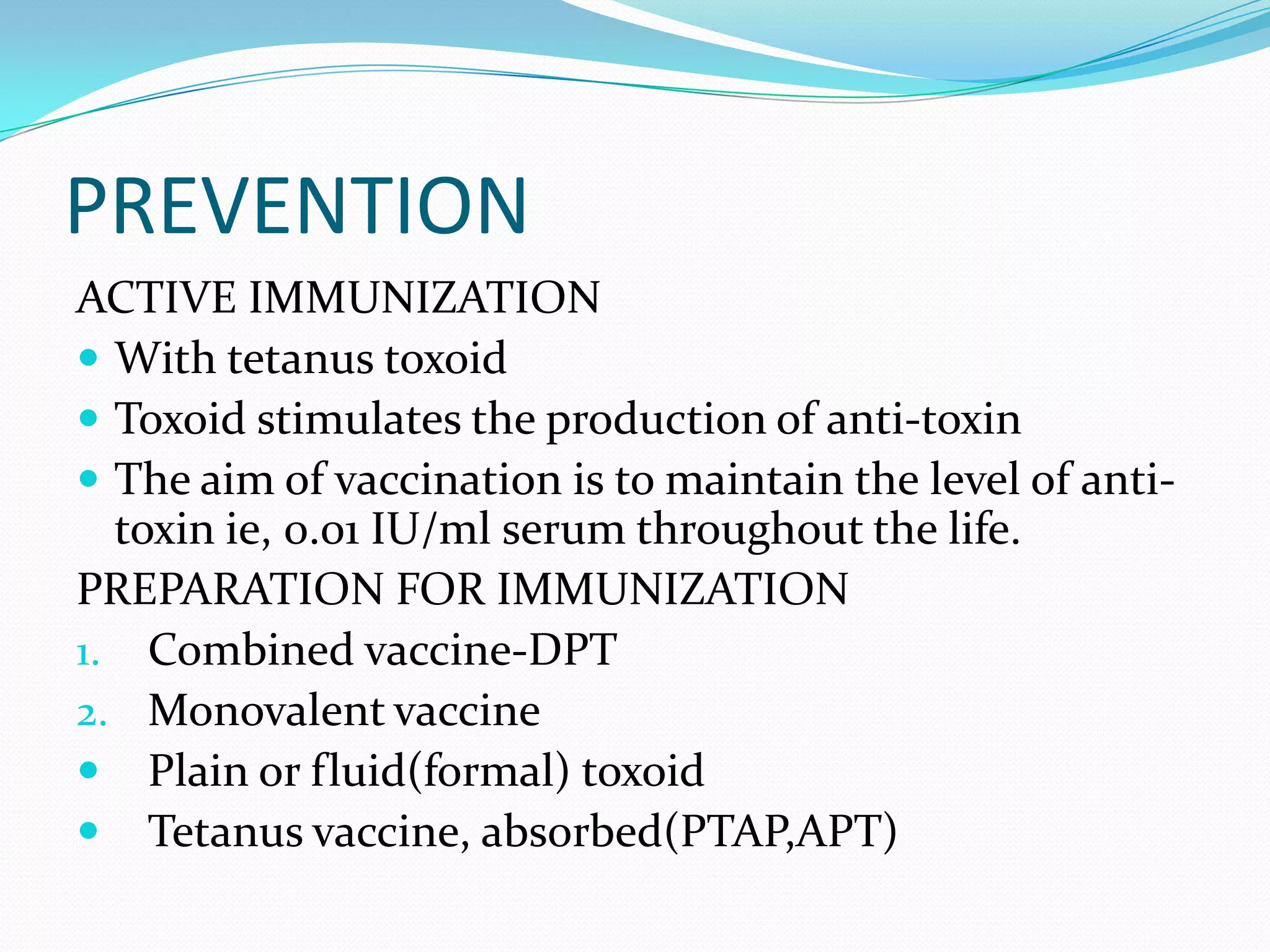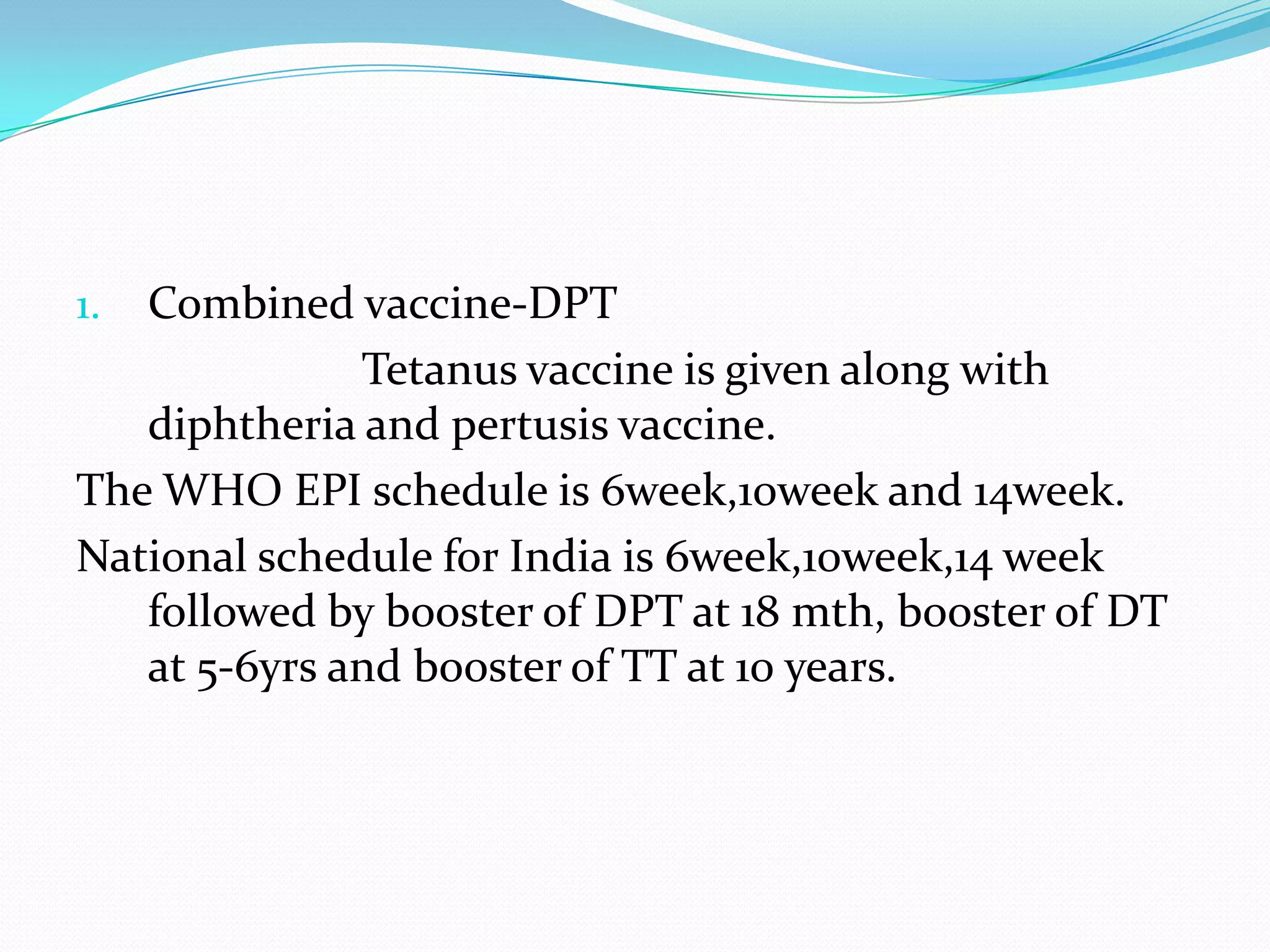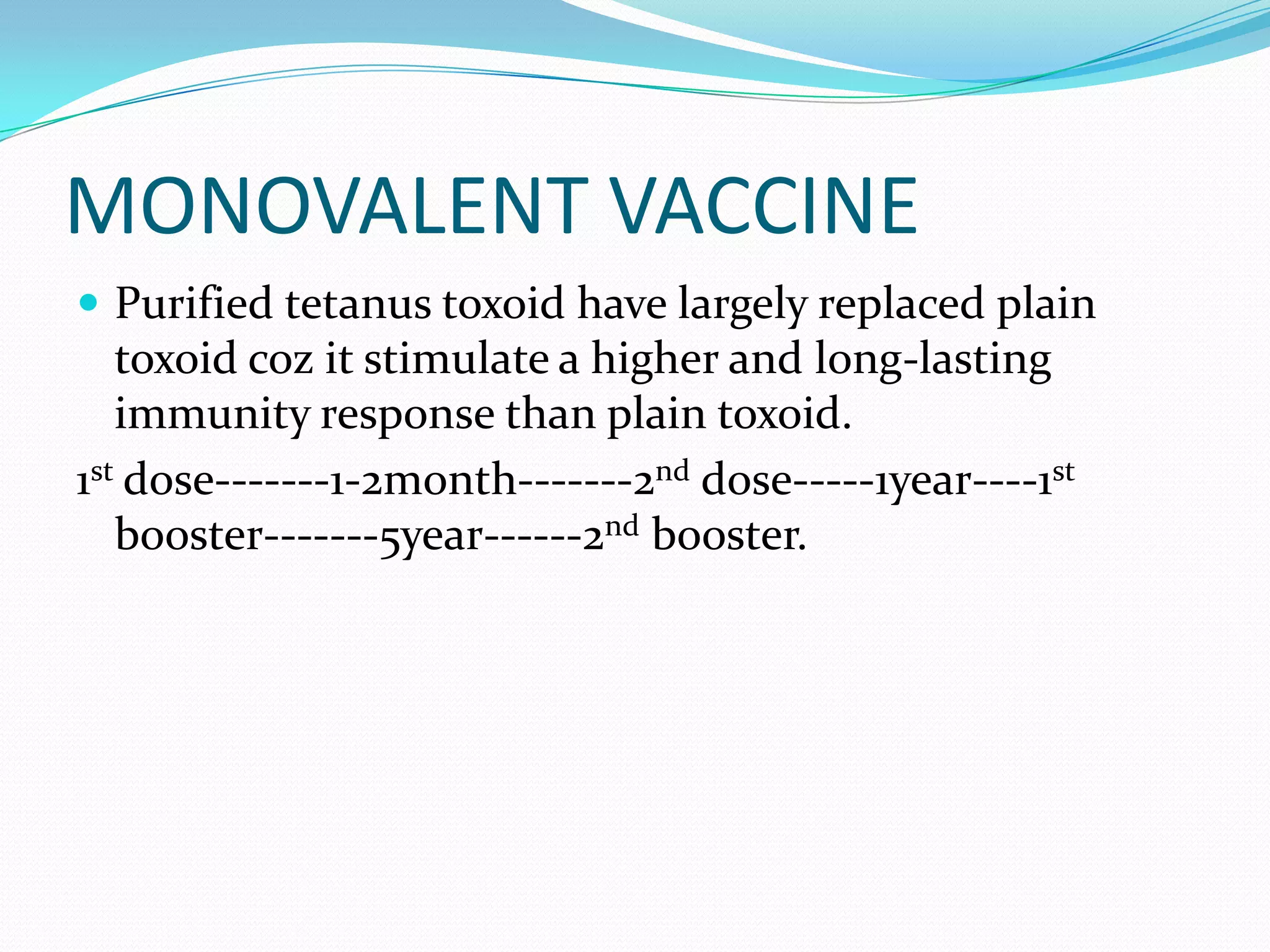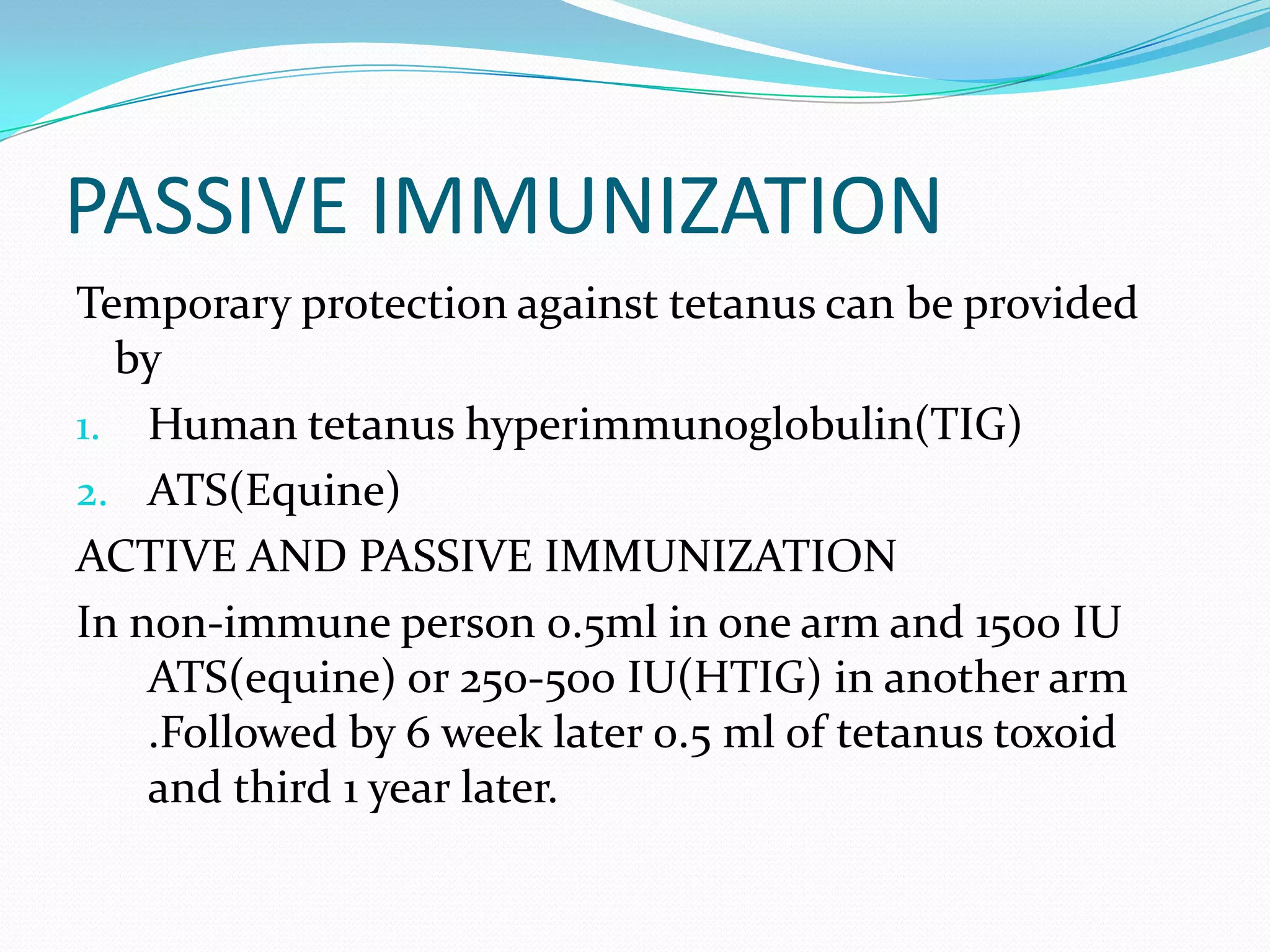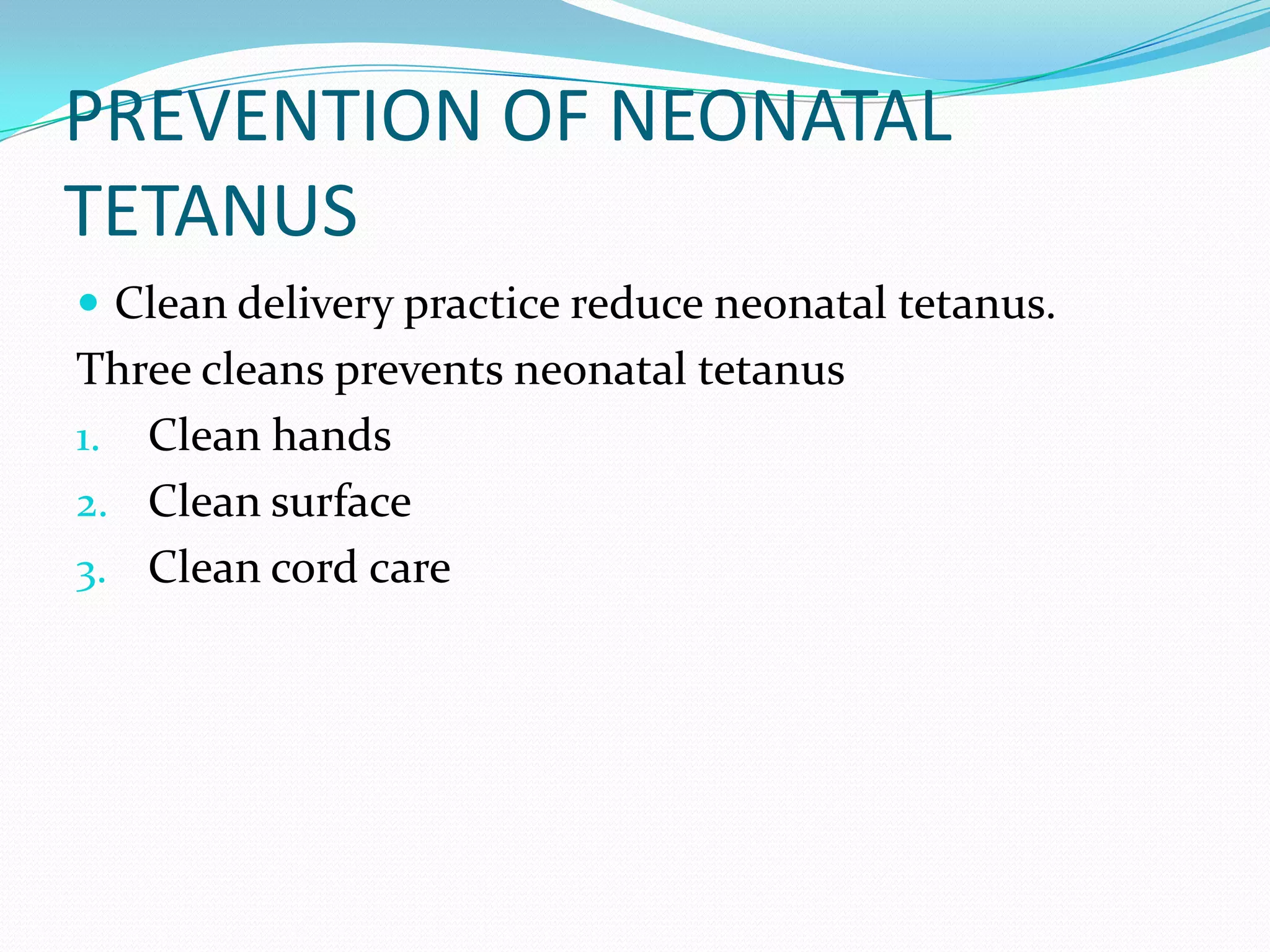1) Tetanus is an acute disease caused by Clostridium tetani bacteria, characterized by muscular rigidity and spasms.
2) In Nepal, tetanus vaccination targets have been met for some but not all districts and coverage rates remain below targets.
3) The bacteria forms spores that can survive in soil and dust and are transmitted through contamination of wounds. Proper immunization and wound care can help prevent transmission and disease.
